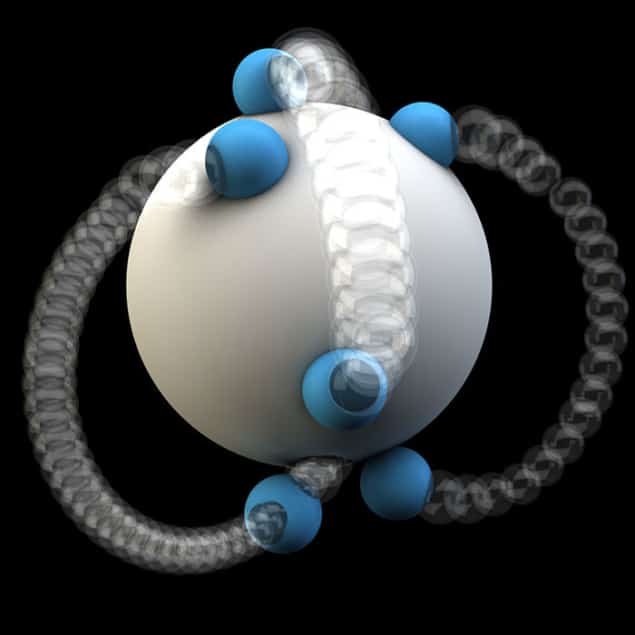
The tiny influence that quantized sound waves called phonons have on atomic energy levels has been measured for the first time by physicists at the University of Heidelberg in Germany. Known as the “phononic Lamb shift”, the effect is predicted by the theory of quantum electrodynamics (QED), which describes how charged particles interact with quanta of light. Markus Oberthaler and colleagues say that their experimental techniques – which use Bose–Einstein condensates (BEC) to simulate the behaviour of phonons rather than conventional phonons in a crystal lattice – could be extended to test other predictions of QED.
The phononic Lamb shift is a variation on the original Lamb shift, a minuscule energy shift found between two atomic-hydrogen energy levels in a vacuum. First measured in 1947 by the American physicist Willis Lamb, this shift defied the classical understanding of empty space, which predicted that these two levels should have the same energy.
QED later explained why the classical understanding was wrong: in a vacuum, virtual electron–positron pairs pop in and out of existence. “The word ‘vacuum’ sounds empty, but it’s not,” says Oberthaler. These virtual particles perturb the hydrogen’s single electron, resulting in the small shift in energy levels.
Perturbing phonons
In the phononic Lamb shift, phonons perturb the atom instead of virtual electrons and positrons. In their experiment, the energy shift due to the phonons is about 10,000 times smaller than the spacing between the atom’s principal energy levels, says Oberthaler.
To make this measurement, the group did not use actual phonons in a crystal lattice to perturb their atoms. Rather, they used excitations in a BEC, which is an ultracold ensemble of atoms that are all in the same quantum state. These excitations behave analogously to conventional phonons. The group used lasers to trap and mix several thousand lithium atoms with a BEC made of about one million sodium atoms, all at near-absolute-zero temperatures.
The lithium atoms interact collectively with the BEC excitations to create a quasiparticle called a polaron. Using a technique known as Ramsey spectroscopy, the team measured the polaron’s lowest two motional energy states and compared these to the same energy states of lithium atoms in the absence of the BEC.
Feasible experiments
Mathematically speaking, the interactions between the lithium atoms and the excitations in the BEC are equivalent to electrons interacting with crystal-lattice phonons, respectively. But studying ultracold atoms and BECs is experimentally much easier than studying phonons in a crystal lattice, Oberthaler says. “To measure the effect, we either put lithium atoms into a sodium condensate or not,” he says. “And then we compare the results of the two cases.” The analogous experiment in a solid-state system would be to trap an electron within a crystal while turning the lattice vibrations on and off at will – which is not currently feasible.
Oberthaler says that the work paves the way for more experimental tests of QED using BECs. It has been difficult to experimentally confirm predicted QED phenomena, he explains, because many of its predictions rely on physical mechanisms that experimentalists cannot control. For example, one cannot experimentally turn off quantum vacuum fluctuations. BECs offer an experimental alternative, Oberthal says. Instead of studying the fluctuations themselves, physicists can simulate analogous behaviour in BECs, where these behaviours can be controlled and manipulated to test the theory.
The research is described in Physical Review X, and writing in an accompanying commentary, Vera Guarrera of the University of Birmingham suggests that they could use similar experimental methods to study the Casimir effect, a QED phenomenon where two neutrally charged plates placed nanometres apart feel a slight force between them due to quantum fluctuations. In addition, the techniques could be used to study other many-body physics phenomena such as superconductivity, she points out.



